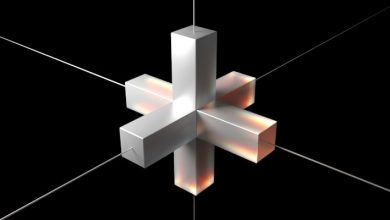Exploring the Concept of Web3: The Next Internet Revolution

- Understanding the Evolution of the Internet: Web3
- The Rise of Decentralized Applications and Smart Contracts
- Blockchain Technology: The Backbone of Web3
- Challenges and Opportunities in the Web3 Ecosystem
- The Promise of Web3: Empowering Users and Redefining Trust
- Navigating the Transition to Web3: What You Need to Know
Understanding the Evolution of the Internet: Web3
The internet has undergone several evolutionary phases since its inception. Web3 is the latest iteration that is set to revolutionize the digital landscape. Unlike its predecessors, Web3 is characterized by decentralization, increased privacy, and enhanced security measures.
One key aspect of Web3 is the use of blockchain technology, which allows for the creation of decentralized applications (dApps) that run on a peer-to-peer network. This shift towards decentralization aims to empower users by giving them more control over their data and online interactions.
Another defining feature of Web3 is the emphasis on privacy and security. With growing concerns over data breaches and online surveillance, Web3 prioritizes protecting user data through encryption and other privacy-enhancing technologies.
Moreover, Web3 is envisioned as a more inclusive and equitable internet where users have greater autonomy and ownership over their digital assets. This ethos of decentralization and empowerment is driving the development of new technologies and applications that prioritize user sovereignty.
In conclusion, Web3 represents a significant evolution in the internet’s architecture and philosophy. By embracing decentralization, privacy, and user empowerment, Web3 is poised to usher in a new era of innovation and collaboration online.
The Rise of Decentralized Applications and Smart Contracts
The rise of decentralized applications (dApps) and smart contracts has been a major driving force behind the concept of Web3, the next evolution of the internet. Decentralized applications are software programs that run on a decentralized network of computers, rather than a single central server. This allows for greater security, transparency, and censorship resistance. Smart contracts, on the other hand, are self-executing contracts with the terms of the agreement directly written into code. They automatically enforce and execute the terms of the contract, removing the need for intermediaries.
One of the key benefits of decentralized applications and smart contracts is the ability to create trustless systems, where users can interact directly with each other without the need for a trusted third party. This has the potential to revolutionize industries such as finance, supply chain management, and healthcare by reducing costs, increasing efficiency, and improving security.
The rise of dApps and smart contracts has also led to the growth of decentralized finance (DeFi), a rapidly expanding sector that aims to recreate traditional financial systems using blockchain technology. DeFi platforms allow users to lend, borrow, trade, and invest without the need for banks or other financial institutions. This has the potential to democratize finance and make it more accessible to people around the world.
Overall, the rise of decentralized applications and smart contracts is a key component of the Web3 revolution, ushering in a new era of internet technology that prioritizes decentralization, security, and user control. As more developers and users embrace these technologies, we can expect to see even greater innovation and disruption across a wide range of industries.
Blockchain Technology: The Backbone of Web3
Blockchain technology is the foundation of Web3, the latest evolution of the internet. This innovative technology is revolutionizing the way data is stored, verified, and shared online. By using a decentralized and secure network of computers, blockchain eliminates the need for intermediaries and ensures transparency and trust in transactions.
One of the key features of blockchain is its ability to create immutable records of data that cannot be altered or tampered with. This makes it ideal for applications where data integrity is crucial, such as financial transactions, supply chain management, and identity verification.
Blockchain technology also enables the creation of smart contracts, which are self-executing contracts with the terms of the agreement directly written into code. This eliminates the need for intermediaries and automates the execution of contracts, saving time and reducing costs.
Moreover, blockchain technology is the backbone of cryptocurrencies like Bitcoin and Ethereum, which are digital assets that can be used for online transactions. These cryptocurrencies operate on decentralized networks, making them secure and resistant to censorship.
In conclusion, blockchain technology is driving the development of Web3 by providing a secure, transparent, and decentralized infrastructure for the internet of the future. Its potential applications are vast, ranging from finance and supply chain management to voting systems and digital identity platforms. As Web3 continues to evolve, blockchain technology will play a crucial role in shaping the digital landscape for years to come.
Challenges and Opportunities in the Web3 Ecosystem
The Web3 ecosystem presents a variety of challenges and opportunities for users, developers, and businesses alike. One of the main challenges is the need for robust security measures to protect sensitive data and transactions in this decentralized environment. As more applications and services are built on blockchain technology, ensuring the integrity and confidentiality of information becomes paramount.
On the other hand, the Web3 ecosystem also offers exciting opportunities for innovation and collaboration. With the ability to create decentralized applications (dApps) that run on the blockchain, developers can explore new ways of interacting with users and creating value. Smart contracts, which are self-executing contracts with the terms of the agreement between buyer and seller directly written into code, open up a world of possibilities for automating processes and transactions.
Moreover, the shift towards a more decentralized web also brings opportunities for users to have more control over their data and online interactions. By leveraging technologies like decentralized identity and data storage, individuals can take ownership of their digital footprint and decide how their information is shared and used.
Overall, while there are challenges to overcome in the Web3 ecosystem, such as scalability and interoperability issues, the opportunities for innovation and empowerment are vast. As the next internet revolution unfolds, stakeholders across various industries have the chance to shape the future of the web and drive meaningful change in the digital landscape.
The Promise of Web3: Empowering Users and Redefining Trust
Web3 represents a paradigm shift in how the internet operates, promising to empower users and redefine trust in online interactions. By leveraging blockchain technology and decentralized networks, Web3 aims to put users back in control of their data and digital identities. This shift towards a more user-centric internet has the potential to revolutionize the way we engage with online platforms and services.
One of the key promises of Web3 is the potential to eliminate the need for intermediaries in online transactions. By using smart contracts and decentralized applications, users can interact directly with each other in a trustless manner, without the need for a middleman to facilitate the transaction. This not only reduces transaction costs but also increases transparency and security.
Furthermore, Web3 opens up new possibilities for content creators and developers to monetize their work without relying on centralized platforms. Through tokenization and decentralized marketplaces, creators can directly engage with their audience and receive fair compensation for their contributions. This has the potential to level the playing field and empower a new generation of digital creators.
Overall, the promise of Web3 lies in its ability to democratize the internet and shift power back into the hands of users. By redefining trust and empowering individuals to take control of their online interactions, Web3 has the potential to create a more equitable and inclusive digital ecosystem. As we continue to explore the concept of Web3, it is clear that this next internet revolution has the potential to reshape the way we engage with technology and each other online.
Navigating the Transition to Web3: What You Need to Know
In navigating the transition to Web3, it’s essential to understand the key concepts and technologies that underpin this new internet revolution. Web3 represents a shift towards decentralization, where users have more control over their data and digital interactions. This transition brings about new opportunities for innovation and collaboration, but also poses challenges in terms of security and privacy.
One of the fundamental aspects of Web3 is blockchain technology, which enables secure and transparent transactions without the need for intermediaries. By decentralizing data storage and processing, blockchain ensures a higher level of trust and immutability. Smart contracts, another key component of Web3, allow for automated and self-executing agreements, reducing the need for traditional legal frameworks.
Moreover, Web3 introduces the concept of decentralized autonomous organizations (DAOs), which are self-governing entities that operate based on predefined rules and protocols. These organizations enable greater transparency and efficiency in decision-making processes, but also raise questions about governance and accountability.
As we navigate the transition to Web3, it’s crucial to stay informed about the latest developments and trends in this space. By understanding the principles of decentralization, blockchain technology, smart contracts, and DAOs, we can better prepare ourselves for the future of the internet. Embracing Web3 requires a shift in mindset towards openness, collaboration, and innovation, paving the way for a more inclusive and democratic digital ecosystem.



